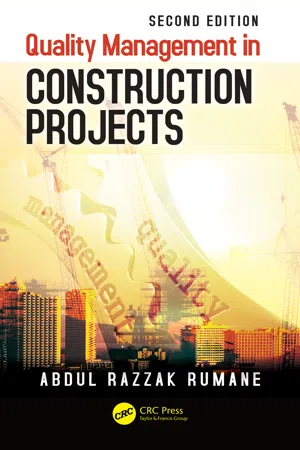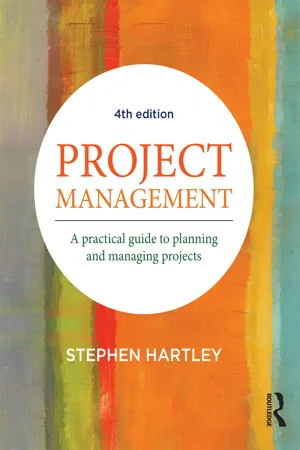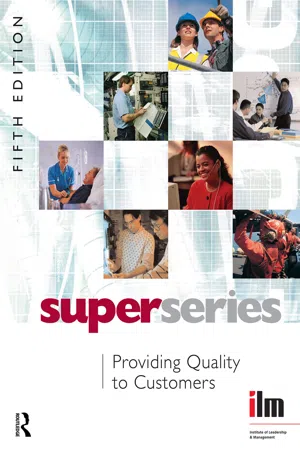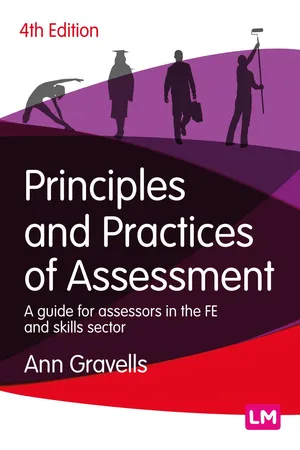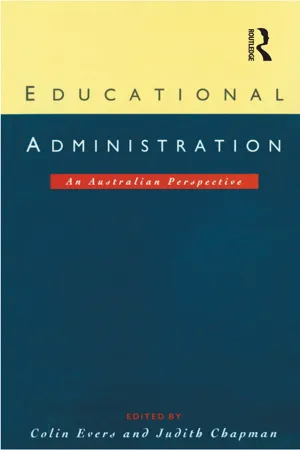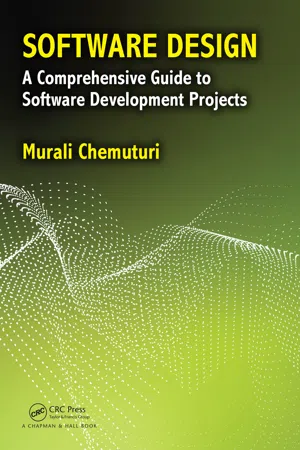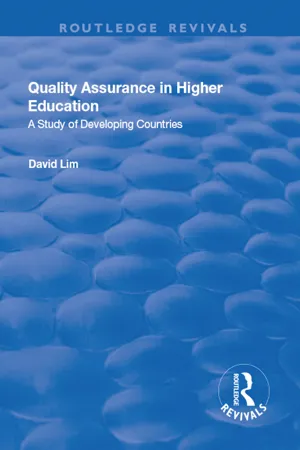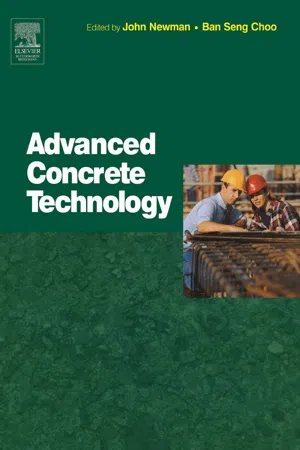Business
Quality Assurance
Quality assurance involves the systematic processes and activities implemented within an organization to ensure that products or services meet specified quality standards. It encompasses quality control, process improvement, and adherence to regulatory requirements. By focusing on prevention rather than detection of defects, quality assurance aims to enhance customer satisfaction and overall business performance.
Written by Perlego with AI-assistance
Related key terms
10 Key excerpts on "Quality Assurance"
- eBook - ePub
- Abdul Razzak Rumane(Author)
- 2017(Publication Date)
- CRC Press(Publisher)
During this period, quality became a means to safety. Unsafe military equipment was clearly unacceptable, and the armed forces inspected virtually every unit of product to ensure that it was safe for operation. This practice required huge inspection forces and caused problems in recruiting and retaining competent inspection personnel. To ease the problems without compromising product safety, the armed forces began to utilize sampling inspection to replace unit-by-unit inspection. With the aid of industry consultants, particularly the Bell Laboratories, they adapted sampling tables and published them in a military standard: Mil-Std-105. The tables were incorporated into the military contracts themselves. In addition to creating military standards, the armed forces helped their suppliers improve their quality by sponsoring training courses in Shewhart’s statistical quality control (SQC) techniques. While the training led to quality improvements in some organizations, most companies had little motivation to truly integrate the techniques. As long as government contracts paid the bills, organizations’ top priority remained meeting production deadlines. Most SQC programs were terminated once the government’s contracts came to an end.According to ISO 9000 (or BS 5750), Quality Assurance is “those planned and systematic actions necessary to provide adequate confidence that product or service will satisfy given requirements for quality.” ISO 8402-1994 defines Quality Assurance as “all the planned and systematic activities implemented within the quality system, and demonstrated as needed, to provide adequate confidence that an entity will fulfill requirements for quality.”The third era of quality management saw the development of quality systems and their application principally to the manufacturing sector. This was due to the impact of the following external environment upon the development take-up of quality systems at this time:- Growing, and more significantly, maturing populations
- Intensifying competition
These converging trends contributed greatly to the demand for more, cheaper, and better quality products and services. The result was the identification of Quality Assurance schemes as the only solution to meet this challenge.Harold Kerzner (2001) has defined Quality Assurance as the collective term for the formal activities and managerial processes that are planned and undertaken in an attempt to ensure that products and services are delivered at the required quality level. Quality Assurance also includes efforts external to these processes that provide information for improving the internal processes. It is the Quality Assurance function that attempts to ensure that the project scope, cost, and time function are fully integrated (p. 1098).According to Frank M. Gryna (2001): - eBook - ePub
Project Management
A practical guide to planning and managing projects
- Stephen Hartley(Author)
- 2020(Publication Date)
- Routledge(Publisher)
subjective form, quality also involves the culture, mindsets and methods at the organisation's disposal to drive the quality imperative (Cole 2010). Assuring such a commanding, if not elusive, edict is no mean feat either.PMBOK (2013) defines Quality Assurance performance as the 'process of auditing the quality requirements and the results from quality control measures to ensure that appropriate quality standards and operational definitions are used'. This, approach is compatible with the International Organization for Standardization (ISO), as detailed in the ISO 9000 standards and the supporting 10,000 series of standards and guidelines and other relevant proprietary and non-proprietary approaches to quality management (the ISO has developed over 17,000 standards, mostly relating to product and process).Much like a declaration or guarantee that the overall project performance and result are evaluated on a regular basis to give all stakeholders the confidence that the relevant quality standards will be satisfied, assurance may involve:- ∎ adoption of an internationally certifiable process
- ∎ eight quality management principles cited by the 9000 series, reflecting management best practice:
- customer focus
- leadership
- people involvement
- process approach
- system approach to management
- factual approach to decision-making
- continual improvement
- mutually beneficial supplier relationships
- ∎ an innate and public culture that says 'quality is what we do'
- ∎ a spirit of experimentation and a creative climate
- ∎ internal systems, procedures and practices to build quality into the start of the project
- ∎ processes to eliminate waste, variation and excess:
- □ a surplus/deficiency in resources to complete the work
- □ inappropriate methods when performing the work (e.g. the use of labourintensive methods when automation would save time)
- eBook - ePub
- Institute of Leadership & Management(Author)
- 2013(Publication Date)
- Routledge(Publisher)
The quality systems of an organization will determine how successful it is in achieving the required product and service quality. In the next session, we discuss total quality management. For the moment, let us focus on quality control and Quality Assurance, which, until fairly recently at least, have been the terms used for ‘the work that the quality department does’. These are the systems that are set up mainly to ensure conformance to specification.4.1 Quality control
Quality control (QC) is concerned with the operational techniques and activities that are used to fulfil requirements for quality.Typically, quality control specialists will be involved in:inspection and testing of materials, parts, assemblies and final products, to see whether they conform to defined standards and specifications;using charts and basic statistics to check results and feed back data;maintaining and validating test equipment;sampling services to see whether they meet desired quality levels.4.2 Quality Assurance
Quality control is part of Quality Assurance (QA).Quality Assurance is defined in ISO 9000:2000 as:‘part of quality management focused on providing confidence that quality requirements will be fulfilled’.Quality Assurance is intended to implement and manage a quality system. It may be involved in:producing and maintaining a quality manual, which defines the organization’s quality system;ensuring conformance to the quality system;supplier approval;analysing statistical quality data;(perhaps) analysing quality costs;quality planning.It has long been realized that simply checking the quality of products is not enough. The Quality Assurance system must take control of all stages of product manufacture, because:effective quality must be based on prevention, not detection.However, the idea of QA as a separate function within an organization is also now recognized as being outdated. Quality Assurance must exist, but the whole organization must be involved in promoting and improving quality. This philosophy is embodied in a system called total quality management (TQM) - eBook - ePub
- Bruce Sherring-Lucas(Author)
- 2005(Publication Date)
- Routledge(Publisher)
But what of Quality Control and Quality Assurance? Although the terms ‘Quality Assurance’ and ‘Quality Control’ are both aimed at ensuring the quality of the end product, they are in fact two completely separate processes. 2.2.1 Quality ControlQuality Control (QC) – ‘part of quality management focused on fulfilling quality requirements’ (ISO 9000:2000).It is the amount of supervision that a product is subjected to, so as to be sure that the workmanship associated with that product meets the quality level required by the design. In other words, it is the control exercised by the organisation to certify that all aspects of their activities during the design, production, installation and in-service stages are to the desired standards.QC is exercised at all levels and as all personnel are responsible for the particular task they are doing, they are all quality controllers to some degree or other.One practical example of QC would be using a calibrated thermometer to ensure paint was cured at a predetermined temperature within a drying oven. The desired standard would be the temperature specified for curing the paint, with the thermometer giving the assurance that the standard was being met. - eBook - ePub
Principles and Practices of Assessment
A guide for assessors in the FE and skills sector
- Ann Gravells(Author)
- 2021(Publication Date)
- Learning Matters(Publisher)
6 Quality Assurance of assessmentIntroductionQuality Assurance should take place to ensure the products and services your learners access are the best they can be. The product is the programme, qualification or set of standards which the learner is working towards. The services are the facilities of the organisation and the support the learners receive. If Quality Assurance does not take place, there could be risks to the accuracy, consistency and fairness of assessment practice, which might disadvantage the learners. Quality Assurance should be a continual process with the aim of maintaining and improving the products and services offered.This chapter will explore the various aspects of quality assuring the assessment process. This chapter will cover the following topics:- Standardising practice
- Internal Quality Assurance
- External Quality Assurance
- The role of technology in Quality Assurance
- Appeals, complaints and disputes
Standardising practice
Standardising practice should be part of the Quality Assurance system in any educational organisation. It helps to ensure the reliability and fairness of assessment planning, decisions, feedback and record keeping. This should enable a consistent approach by all assessors for all learners. It is an opportunity to ensure that all staff are accurately interpreting the requirements of what is being assessed. It’s also a good way of maintaining professional development, and ensuring compliance and accountability with awarding organisations’ and regulatory authorities’ requirements.The standardisation process enables people to work as a team rather than on their own, to compare what they do and to share good practice. You should have the opportunity to standardise your practice with other assessors, particularly where more than one assessor is involved in the same subject area. - eBook - ePub
- Judith Chapman(Author)
- 2020(Publication Date)
- Routledge(Publisher)
17 Quality Assurance and Quality Management in Education Systems Peter CuttanceThe literature on quality over the past forty years can be viewed as having developed three key areas relating to different aspects of assuring and managing quality. The first area describes approaches to quality control. Quality control refers to a system for comparing output with defined standards. The second area describes approaches to Quality Assurance. Quality Assurance can be viewed as addressing the same objectives as quality control but doing so in a preventative rather than after-the-fact way. It goes beyond the comparison of output with defined standards, seeking to prevent defects from arising in the first place. Thus, it extends the focus from outcomes or outputs to the processes that produced them. The third area directly addresses strategies for ensuring that not only are preventative practices established but also that the whole of general management practice is orientated towards the management of quality. This is manifest in the literature by reference to such approaches as ‘total quality management’.Quality control
Quality control refers to a system for comparing output with defined standards:. . . the activities and techniques employed to achieve and maintain the quality of a product or service. It involves a monitoring activity, but also concerns finding and eliminating causes of quality problems so that the requirements of the client are continually met. (Oakland 1989: 10)In education systems, large-scale student testing can be viewed as one manifestation of quality control. The purpose of such testing is to certify some students as meeting a predefined quality standard, often defined by norms, and to ‘reject’ other students as having not met those standards. This non-certification of some students leaving the education system is evidence that not all outcomes of the system meet the predefined quality standard. Another example is students being held back to repeat a grade. - eBook - ePub
Software Design
A Comprehensive Guide to Software Development Projects
- Murali Chemuturi(Author)
- 2018(Publication Date)
- Chapman and Hall/CRC(Publisher)
Quality of conformance : This refers to the seriousness with which we carry out quality-control activities during all the phases of product development/manufacture/construction. The infrastructure built for Quality Assurance in the organization, the support given by organizational management to QA activities, the diligence with which we carry out QA activities, what we do with the data generated during the QC activities, and the seriousness with which we carry out process improvement to ensure defect prevention form the basis for this activity. This is not an activity that is concurrent to the product development/manufacture/construction activities. This is a specialist activity that carries out Quality Assurance activities.While designers alone do not carry the onus of the quality of a product on their capable shoulders, the bulk of responsibility lies there. Therefore, it is imperative that QA activities be carried out diligently by the designers. If there are defects in design, they will percolate downward and get magnified in the downstream phases. While manufacturing defects get a bad name for the organization, design defects get the organization closed.Now, let us look at the techniques of QA and then see how to apply them to our design work. Techniques of Quality AssuranceQuality Assurance, or QA, is not just software testing, as understood by many in the software development industry. Quality Assurance has two dimensions. The first is to prevent defects, and the second is to trap defects before they are delivered to the customer. The second dimension is familiar to most and is often misunderstood to be Quality Assurance itself. The defect-prevention portion of Quality Assurance is achieved by implementing standards, guidelines, checklists, formats, and processes for carrying out work without defects in the organization. The second part of trapping defects and preventing them from being delivered to the customer is referred to as quality control, or QC. QC is achieved by using techniques such as inspection, verification, reviews, testing, and audits. While quality control is used at the execution level, the defect prevention portion of QA is achieved at the organizational level. Let us discuss these two parts here.Quality control activities are carried out while the work is being carried out in the organization. As soon as an activity is completed, the deliverables of that activity would be subjected to its applicable QC activity. Quality control is achieved by the following techniques:1. Inspections 2. Reviews 3. Audits 4. Validation Inspections - eBook - ePub
- T F Waters(Author)
- 2017(Publication Date)
- CRC Press(Publisher)
Chapter ElevenQuality Assurance
After reading this chapter you should understand:- what is meant by quality
- the benefits of international quality standards
- the difference between Quality Assurance, quality control and inspection
- the true costs of quality
- the difference between conformance and accuracy
- the relationship between process capability and tolerance
- the importance of consistent process control and the value of statistical process control
- the basis of length and angle measurement
- how accurate measurements are performed
- the difference between direct reading measurement and limit gauging
- why the co-ordinate measuring machine is so important in modern manufacturing.
11.1 What is quality?
In a consumer society everyone is frequently a customer, whether the purchase involves a pen or a PC. While the costs of buying these two items are very different, the customer’s expectations are precisely the same, namely that the product shall be of satisfactory quality and suitable for the purpose for which it has been sold. Indeed, the customer is protected by UK law [Sale of Goods Act 1979, Sections 14(2) and 14(3), Sale and Supply of Goods Act 1994, Section 1(1)] to ensure that this is so.Therefore quality may be defined as the ability of a product or service to satisfy a stated or implied need (British Standards Institution 1993a), and should not be confused with reliability, which is the ability to maintain consistent quality. For manufacturers to be able to guarantee the customer consistent quality they must control the quality of all aspects of their business. Obviously, the more sophisticated the product the more complex will be the organization necessary to ensure that consistent quality is maintained.To assist companies in setting up and maintaining suitable quality systems, in 1979 the British Standards Institution (BSI) introduced BS 5750:1979, which provided a series of specifications and guidelines for quality management and quality system elements. In 1987 the International Organization for Standardization (ISO) issued a specification on the same topic area, ISO 9000. BSI then released a harmonized version, BS 5750 (British Standards Institution 1987), and in the same year the European Union published its equivalent specification, EN 29000. From that time there has been international uniformity of the standards specifying good practices in the organization and management of Quality Assurance. The most recent revision of this international standard was released in 1994, and in the UK is known as BS EN ISO 9000 (British Standards Institution 1994). - eBook - ePub
Quality Assurance in Higher Education: A Study of Developing Countries
A Study of Developing Countries
- David Lim(Author)
- 2018(Publication Date)
- Routledge(Publisher)
2 Principles of Quality Assurance in Higher Education 2.1 Meaning of Quality in Higher EducationThe term ‘Quality Assurance’ refers to all the policies and processes directed to ensuring the maintenance and enhancement of quality. The concept of quality and the concern for assuring and enhancing it was developed in the business sector in the West, where commercial success depends on it. The need to maximise profit in a competitive environment requires that costs are reduced and sales increased. An important way to increase sales is to have a product or service that is in demand and of high quality at an affordable price.Over the same period, and in sharp contrast, quality was not of concern to the higher education sector. For a long time, higher education was seen as an essential public good for which abundant government funding was required and guaranteed. Universities were seen as symbols of social and economic responsibility, being established by acts of parliament to be guarantors of their own worth and credibility. They were also established by the elite classes for themselves, with little need to account for their action.However, things started to change in western societies in the late 1980s. Education, including higher education, no longer remained the preserve of the rich, and more students from more diverse backgrounds entered university. At the same time, funding for higher education became harder to obtain as public funds became scarcer, partly as the result of the ideological move to smaller government and the user-pays principle, and partly as the result of the greater demand for funds from other government departments.These developments led to more being asked of universities by students and funding authorities alike. Students asked universities to prove their worth by becoming more vocal in their demand for relevant and quality programs, and ultimately by voting with their feet. Funding authorities did it by requiring universities to justify the large public expenditure on them. Today, many years after it was accepted in the commercial world, there is general agreement on the need for accountability and value for money in the higher education sector and for establishing policies and processes to ensure the maintenance and enhancement of quality. - eBook - ePub
- John Newman, B S Choo(Authors)
- 2003(Publication Date)
- Butterworth-Heinemann(Publisher)
8Quality concepts
Patrick Titman8.1 Introduction
The ACT syllabus embodies the truth that technical knowledge and expertise are of limited value unless they are linked to management expertise. Part of the approach to this expertise is an understanding of the various management systems expected to operate – quality, environment, health and safety – and of how these systems apply in different parts of the construction industry. For a firm to be successful it must have people able to be sympathetic to and to relate the firm to the needs of its customers. This chapter addresses these issues.8.2 Definitions
Formal definitions of quality management terms are given in ISO 9000:2000 Quality management systems – fundamentals and vocabulary . These can be expressed in the simple terms below:Quality Meeting requirements. Quality management The means we devise for meeting requirements. Quality control The means of knowing (monitoring) where we are relative to meeting requirements. Quality Assurance The assurance we give ourselves and others – customers, shareholders, regulators – that quality is being provided. Audit Independent enquiry to examine whether the management is appropriate and whether quality is being achieved. But what is really useful is to understand the relationship between the five concepts. They make a pattern like the clock in Figure 8.1
Index pages curate the most relevant extracts from our library of academic textbooks. They’ve been created using an in-house natural language model (NLM), each adding context and meaning to key research topics.
